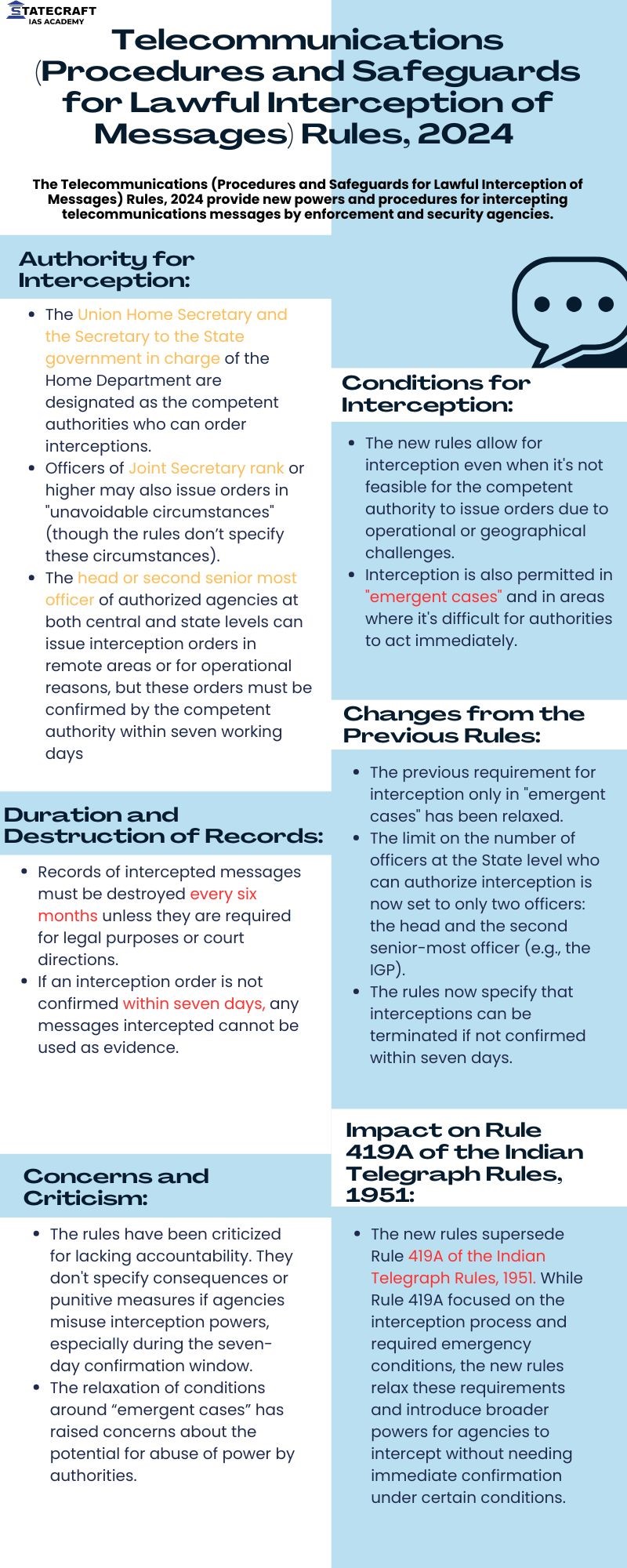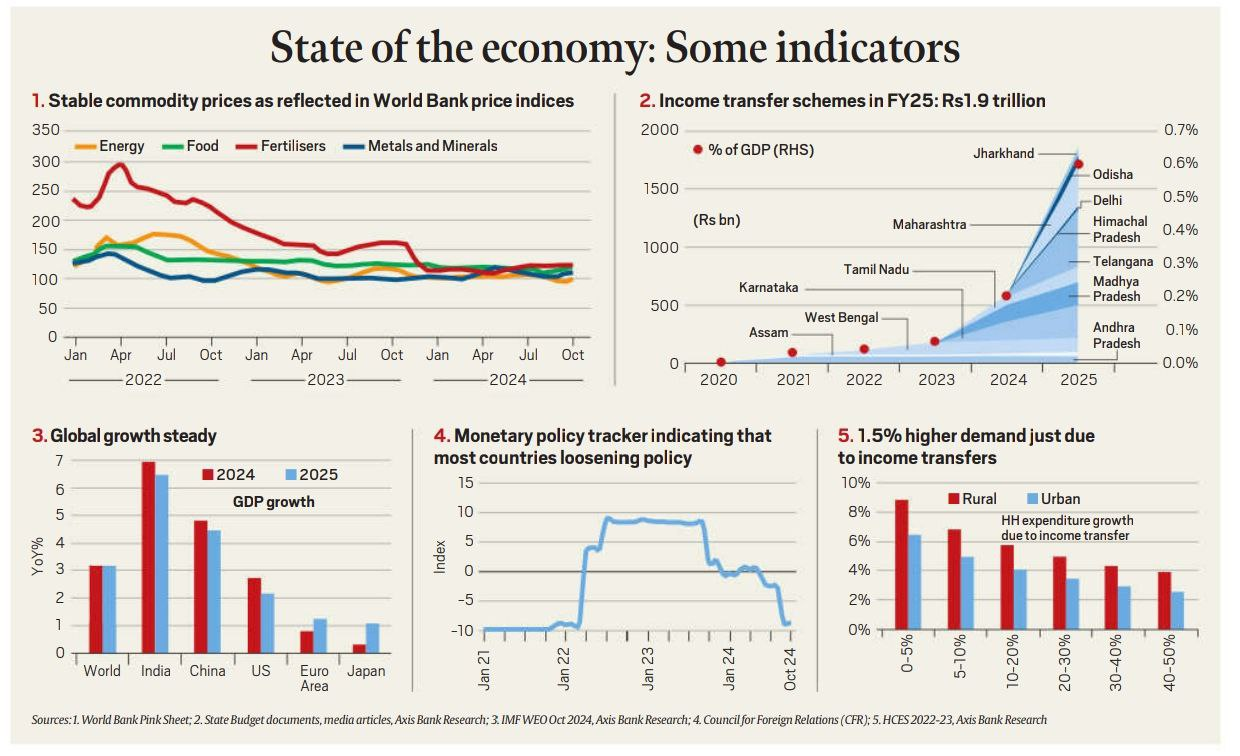Index:
- Dodo (Raphus cucullatus) –The Extinct Bird
- Scrapping the No-Detention Policy
- Reimposition of Protected Area Regime (PAR)
- Canary in the Canopy - India State of Forest Report 2023
- Telecommunications (Procedures and Safeguards for Lawful Interception of Messages) Rules, 2024 - Infographic
- State of Indian Economy – Some Indicators
- Other News Headlines
1. Dodo (Raphus cucullatus) –The Extinct Bird
The Dodo Overview
- Extinction Status: Extinct since the late 1600s.
- Scientific Classification:
- Kingdom: Animalia
- Phylum: Chordata
- Class: Aves
- Order: Columbiformes
- Family: Columbidae
- Native Habitat: Endemic to the island of Mauritius in the Indian Ocean.
Physical Characteristics
- Size: Approximately 3 feet tall, weighing around 10-20 kg.
- Flightlessness: Result of a lack of natural predators on Mauritius, leading to evolutionary loss of flight.
Diet and Behavior
- Diet: Primarily frugivorous, feeding on fallen fruits, seeds, roots, and small plants.
- Reproductive Behavior:
- Believed to lay a single egg on the ground.
- Vulnerable to predators due to ground nesting.
Causes of Extinction
- Human Hunting: Arrival of Dutch settlers in the 1600s led to overhunting.
- Introduction of Invasive Species: Rats, pigs, and monkeys introduced by humans ate dodo eggs.
- Habitat Destruction: Deforestation for settlements and agriculture reduced the bird’s habitat.
Interesting Facts
- Keystone Species: Played a role in seed dispersal of certain plant species in Mauritius, such as the Tambalacoque tree (commonly called the “dodo tree”).
- The phrase “as dead as a dodo” originated to describe something irreversibly extinct.
Despite its extinction, the dodo remains a cultural icon, featuring in books like “Alice’s Adventures in Wonderland.”
2. Scrapping the No-Detention Policy
CONTEXT: The decision of the Government of India to scrap the “no-detention” policy for Classes 5 and 8 under the Right of Children to Free and Compulsory Education (Amendment) Rules, 2024.
- Policy Change:
- The no-detention policy, introduced under the Right to Education Act (RTE), 2009, allowed automatic promotion of students up to Class 8.
- The amended rules now permit schools to detain students in Classes 5 and 8 if they fail to meet the required promotion criteria.
- Provisions in the New Rules:
- Students failing to meet the promotion criteria will be given additional instruction and remedial measures to close learning gaps.
- A re-examination will be conducted within two months of the result declaration.
- If a student fails the re-exam, they can be detained.
- Safeguards for Students:
- The rules emphasize that no student will be expelled from school until Class 8.
- Teachers must provide guidance to retained students and their parents, identifying learning gaps and ensuring specialized inputs for improvement.
- Alignment with NEP 2020:
- The new rules are in line with the objectives of the National Education Policy (NEP) 2020, focusing on improving learning outcomes and addressing learning deficiencies.
- Implementation Timeline:
- Although the RTE Act was amended in 2019 to remove the no-detention policy, the implementation of these rules was delayed until the publication of the National Curriculum Framework in 2023.
- Objective:
The primary goal is to ensure better learning outcomes and support students struggling with foundational learning concepts, rather than automatic promotion.
3. Reimposition of Protected Area Regime (PAR)
CONTEXT: On December 17, the MHA reimposed the Protected Area Regime under the Foreigners (Protected Areas) Order, 1958, for Manipur, Nagaland, and Mizoram.
- This move restricts the movement of foreigners in these states.
- What is Protected Area Regime (PAR)?
- Under the Foreigners (Protected Areas) Order, 1958, certain areas in India are designated as Protected Areas for security reasons.
- Foreigners entering these areas require a Protected Area Permit (PAP), issued by the Central Government or an authorized body.
- Details required for PAP include the place of entry, residence, and period of stay.
- Historical Background:
- Protected Areas include regions along India’s international borders in Himachal Pradesh, Uttarakhand, Arunachal Pradesh, Jammu & Kashmir, Ladakh, and parts of Sikkim.
- Manipur, Nagaland, and Mizoram were also designated as Protected Areas in 1958.
- In 2010, PAR restrictions were relaxed for Manipur, Nagaland, and Mizoram to promote tourism and improve security.
- Reason for Reimposition:
- The decision was taken against the backdrop of ethnic violence in Manipur between the Kuki-Zo and Meitei communities, and rising security concerns along the 1,643-km border with Myanmar.
- A recent surge in refugee influx from Myanmar, following the 2021 military coup, has added to the security challenges.
- Approximately 40,000 refugees from Myanmar have entered India, including 4,000 into Manipur and Mizoram.
- PAP Requirements:
- Foreigners, including those from neighboring countries such as Myanmar, must secure a PAP before entering Protected Areas.
- Registration is mandatory within 24 hours of entry.
Exemptions: Certain groups, such as Myanmar nationals visiting the region temporarily, can register with the FRRO (Foreigners Regional Registration Office) instead of obtaining a PAP.
4. Canary in the Canopy - India State of Forest Report 2023
Key Points
- Forest Cover and Governance in India:
- According to the India State of Forest Report 2023, 25% of India’s land is covered by forests or trees—a seemingly healthy statistic.
- However, the report’s numbers mask significant issues, including loss of biodiversity-rich forests and inclusion of plantations and orchards in forest cover calculations.
- Historical Context:
- Post-independence, India’s forest policies shifted from the colonial focus on timber extraction to sustainable forest conservation.
- Two landmark legislations reflect this effort:
- Forest (Conservation) Act, 1980: Aimed to restrict the diversion of forest land for non-forest purposes.
- Forest Rights Act, 2006: Recognized the rights of forest-dwelling communities over forest resources.
- Challenges in Implementation:
- Industrial Development vs. Climate Change: Developmental activities and climate pressures have hindered the effective implementation of forest laws.
- Ambiguous Definitions: The government has redefined “forests” to exclude community forests and include commercial plantations, distorting the country’s progress on increasing carbon sinks.
- Critical Issues:
- Loss of Natural Forests: Biodiverse regions like the Western Ghats, Nilgiris, Northeast, and mangroves in the Kutch and Andamans are shrinking.
- Compensatory Afforestation: Plantations used to offset forest loss have lower ecological and carbon sequestration value compared to natural forests.
- Forest Fires: Northern districts have seen significant increases in fire-affected areas due to insufficient resources and manpower for fire control.
Weakening Environmental Safeguards: The Forest (Conservation) Amendment Act, 2023 has diluted the protections offered by the 1980 Act, easing forest land diversion for developmental purposes.






